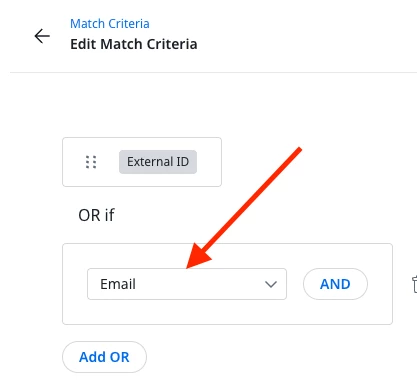I’m running into all sorts of issues with our Company Person data because of Gainsight’s strictness re: the Load to People action. Any other standard or custom object you load to in Gainsight allows you to choose your identifiers at will, which is great because sometimes you need that flexibility.
However, with Load to People, you must first define your identifier in Administration > People, which is set to “email” as default and until fairly recently was the only identifier you could pick (yuck). Now that we can change the identifier though, I changed ours a few months back from email to External ID. However, I’m realizing that my predecessor did not even map External ID for some of our Company Person records, so I’m trying to go back and either backfill the External IDs or mark them for deletion, whichever is appropriate.
Instead of just being able to change my identifier to “Email” for this one rule, I must go to Administration > People and add “Email” to the match criteria.

This is convoluted, but it’s ultimately ok because the rule does let me uncheck “External ID” as an identifier and only choose “Email,” which is necessary in this case because, again, the records I’m dealing with have no External ID and therefore that’s a useless identifier for my use case.
The real problem is that for some reason when I set this match criteria, it updates all my other Load to People rules and my SFDC connector job to include Email as a second identifier. Why??
So now I’m resorted to doing one of the following once I add Email as a second identifier for this cleanup process:
- Quickly go in to each Load to People rule and change all the identifiers back to just “External ID” and not Email, or
- Make sure I run this process during a time when none of my other Load to People jobs nor my SFDC connector job is running, then go back to Administration > People and undo “Email” as a second identifier.
This all seems so overly engineered. I understand this was probably designed to help sort of protect admins/ops professionals from themselves re: Contact/Person data, but in reality it’s quite restrictive and simply does not jive with how any other “load to object” action works, including, ironically “Load to SFDC Contact.”



